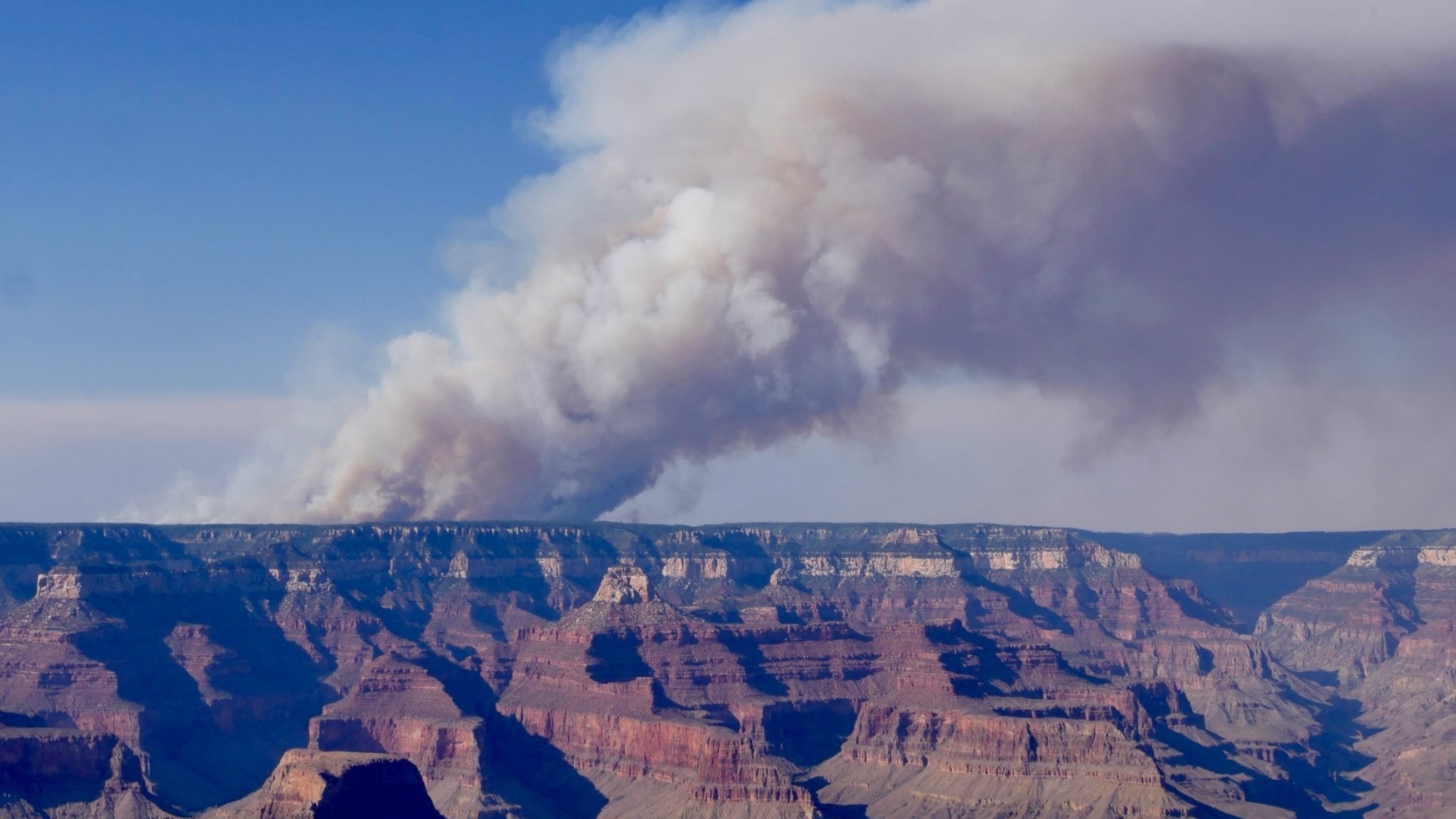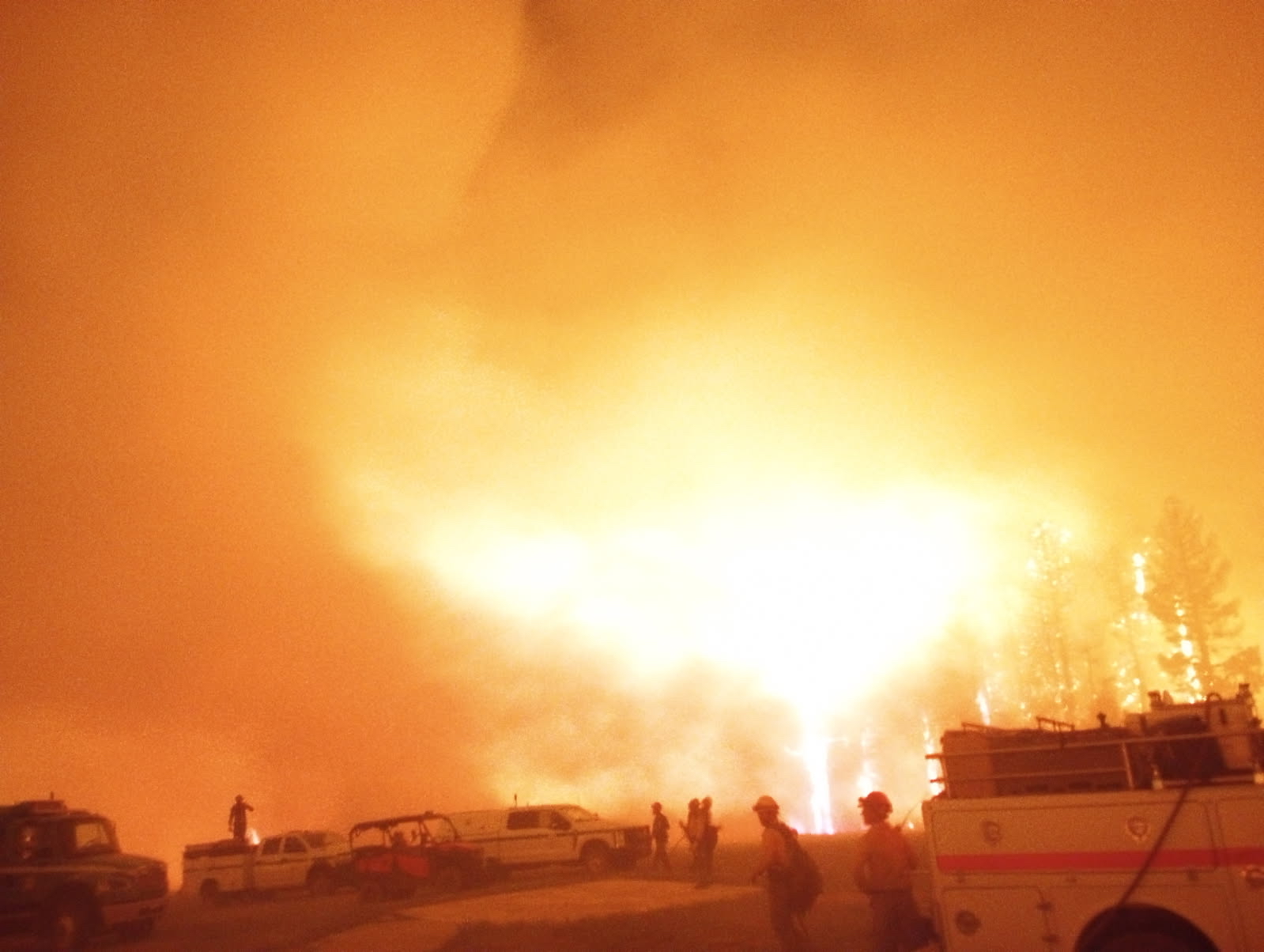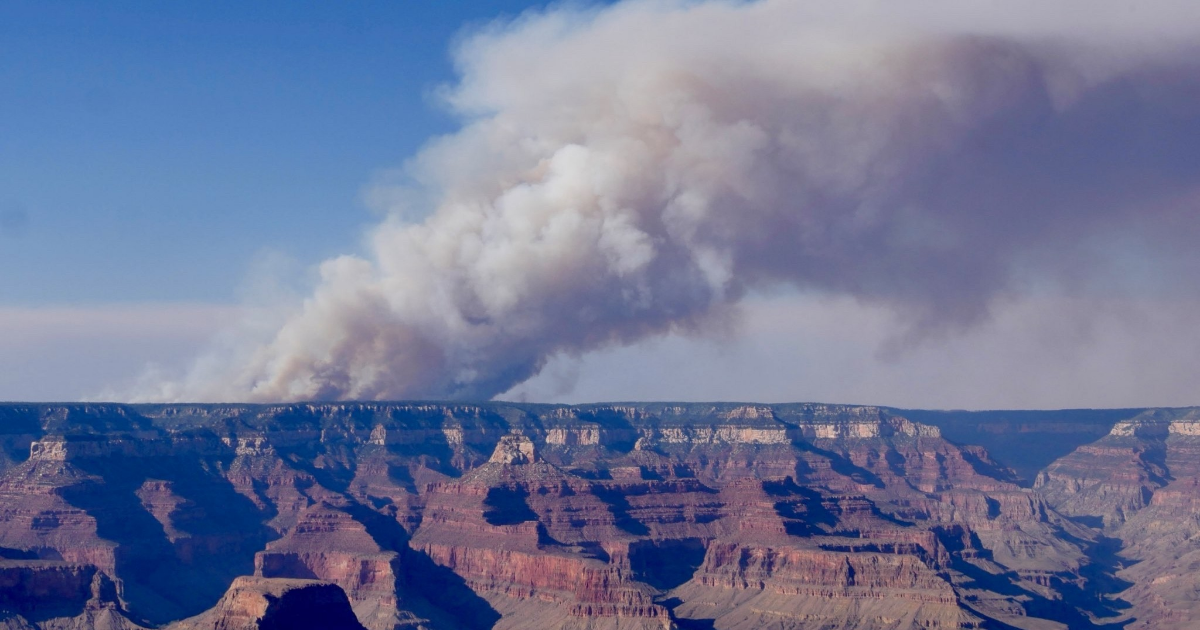
A large plume of smoke was visible on the North Rim of Grand Canyon National Park. (Image credit: Grand Canyon National Park via Getty Images)
A wildfire has ignited the North Rim of the Grand Canyon, burning down the Grand Canyon Lodge and other historic cabins.
Firefighters were managing the Dragon Bravo Fire, started by a lightning strike, when an uncommonly strong gust of wind pushed the fire beyond multiple containment features on Friday (July 11), according to InciWeb, the U.S. government’s incident information management system website.
The fire then exhibited “extreme and volatile” behavior on Saturday (July 12), expanding by 500 acres (0.8 square miles) according to a statement released by the National Park Service (NPS). Conditions in the region are hot, dry and windy, making it more challenging for firefighters.
You may like
A second wildfire, named the White Sage Fire, is burning around 35 miles (56 kilometers) north of the Dragon Bravo Fire in Kaibab National Forest.
“Preliminary assessments indicate that between 50 to 80 structures have been lost, including NPS administrative buildings and visitor facilities,” NPS representatives wrote in the statement. “No injuries or loss of life have been reported, and all staff and residents were successfully evacuated prior to the fire’s escalation.”
Related: ‘We are creating the fire equivalent of an ice age’: Humans have plunged Earth into the ‘Pyrocene’
Most wildfires are started by humans, either accidentally or on purpose, but lightning is a common natural cause, responsible for around 10% of global forest fires. Lightning can be as hot as 54,000 degrees Fahrenheit (30,000 degrees Celsius) — five times hotter than the surface of the sun — and pack as much as 5 gigajoules of energy. These sparks of electricity are more than capable of igniting dry vegetation and can set multiple trees alight in an instant.
Get the world’s most fascinating discoveries delivered straight to your inbox.
The Dragon Bravo Fire began on July 4 and was initially managed as part of a confine and contain strategy. However, the fire has been growing at night, when visibility is reduced and firefighters can’t use aerial resources to drop fire retardant and water on the fire, according to InciWeb.

Hot, dry and windy conditions have been challenging for firefighters battling the Dragon Bravo Fire. (Image credit: Grand Canyon National Park via Getty Images)
The fires also damaged a nearby water treatment facility, which released toxic chlorine gas. The gas leak meant firefighters had to evacuate from critical zones near the fire, according to the NPS statement.
The Dragon Bravo Fire has currently burned around 5,000 acres (7.8 sq/m) of land, while the larger White Sage Fire currently covers around 50,000 acres (78 sq/m), according to the wildfire live tracking non-profit Watch Duty. Both were active at the time of writing, with strong winds, hot temperatures and low humidity driving them, NPS representatives wrote.
“With continued active fire behavior and ongoing risks to personnel and infrastructure, the North Rim will remain closed to all visitor access for the remainder of the 2025 season,” NPS representatives wrote.
